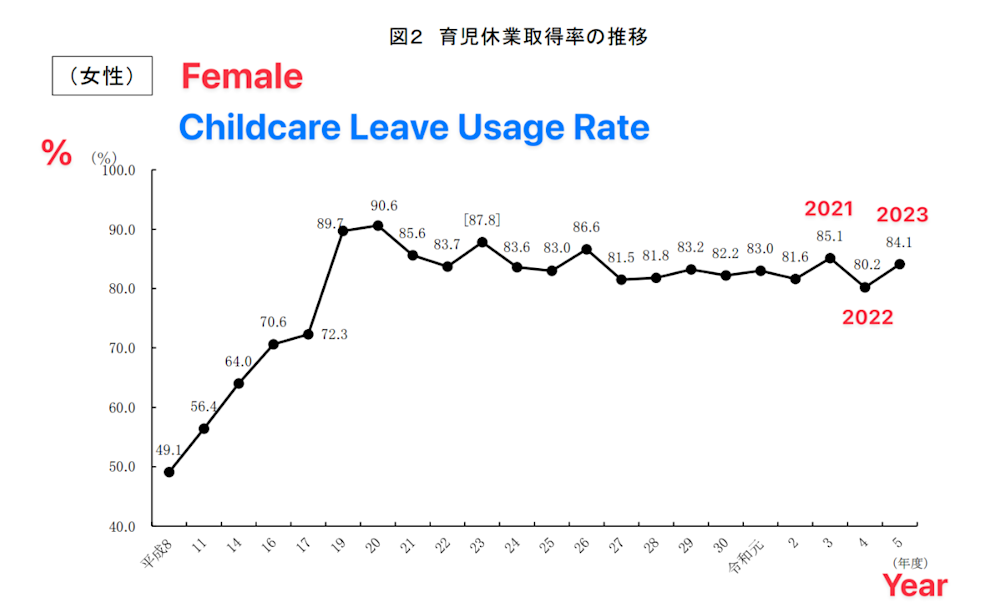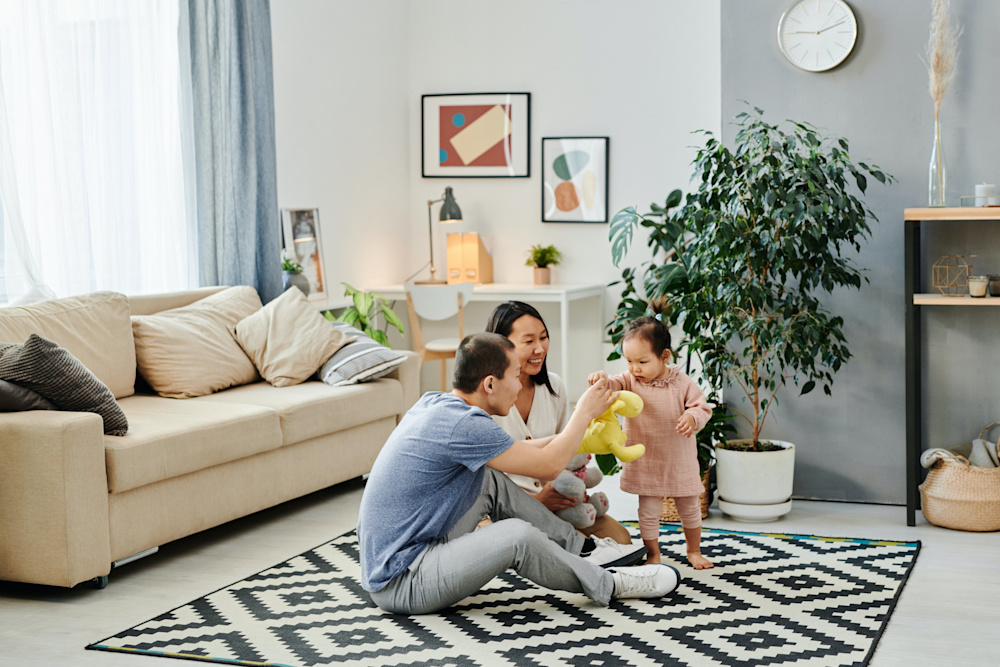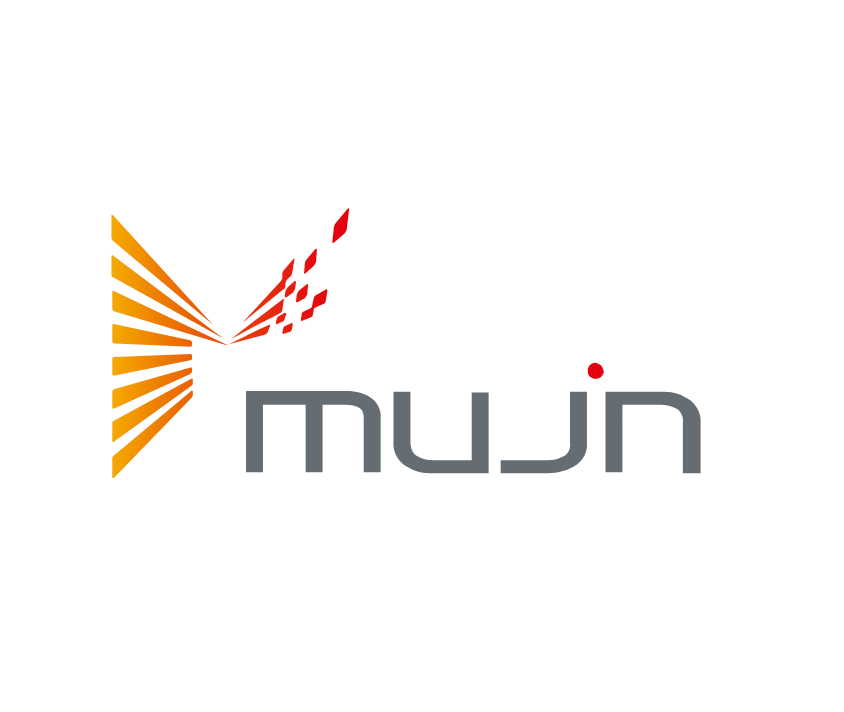Updated September 12, 2025
All About Childcare Leave: Paternity and Maternity Leave in Japan
Going through pregnancy is hard. With all the doctor visits, shopping for clothes, diapers, and binkies, and the never-ending and nerve-wracking anticipation of expecting a child, it can all get quite overwhelming.
However, some might say that the real challenge begins once the baby is born. On top of worrying about work and other financial aspects, the transition to parenthood can be a challenging period.
Luckily, childcare leave in Japan is available for both the father and the mother, and their rights to take leave is protected under the Japanese Labor Standards Act.
In today’s post, I’ll introduce childcare leave laws in Japan, and talk about specific rules for maternity leave and paternity leave. I’ll also go in depth about your rights regarding childcare allowance and leave and how these rights can be exercised when the time comes.
In this article: 📝
- The Background of Childcare Leave (育児休業)
- The Different Types of Childcare Leave: Who is Eligible?
- All About The Benefits: Calculating Your Childcare Leave Allowance (育児休業給付金 / 育休手当)
- Recent Developments: Additional Post-Childbirth Leave Support Benefit
- Major Changes: The 2025 Child Care and Family Care Leave Law Amendments
- Parental Leave vs Childcare Leave
- Conclusion: A Competitive Hiring Landscape, Better Benefits
In order to fully understand the current system, let’s start with some background on the history of childcare leave and how the government has been working on improving the numbers.
The Background of Childcare Leave (育児休業)
Childcare Leave in Japan is created under the Childcare and Family Care Leave Act (育児・介護休業法). To put it in the simplest terms, childcare leave (育児休業) is the time off that’s provided to an employee when they are expecting a new child.
This includes both biological and adoptive parenthood, and it allows the parents to take some time off from work to take care of themselves and their newborn while still having financial security.
While the concept of childcare leave has been around for a while in Japan, it was mostly recognized in the form of maternity leave, allowing only women to benefit from the system.
However, the culture around childcare leave has been changing. With the revision of Japan’s Childcare Leave and Family Care Leave Act (育児・介護休業法), it’s become easier to men to also take childcare leave.
But while the idea of paternal leave has been normalized by law, it hasn’t always been well utilized in reality.
Low Paternity Leave Rates
Officially, the law in Japan allows both men and women to take childcare leave. But the data shows that, in practice, less men actually exercise the right to do so.
The rules regarding paternity leave have specifically been updated in order to address this discrepancy. Prior to 2022, mothers could take “childcare leave at birth (産前・産後休業)”, or “maternity leave” as part of the Childcare Leave policies (育児休業). Fathers could also take a similar leave on an old policy called ''Papa leave” (パパ休暇), which allowed fathers to take childcare leave when the child was born. But due to many restrictions and conditions of the policy, it was harder for men to meet the requirements to qualify, which meant that the rates of men using the Papa Leave were still low. And in many cases, it simply wasn’t a socially embraced concept.
As expected, the underutilization of Papa Leave also put immense pressure on women during the hardest stages of childcare, making them effectively the sole person responsible for the care of a newborn right after giving birth.
Since then, the Childcare Leave Act has been updated multiple times in an effort to promote fathers’ involvement in their children’s development and help families balance life and work more efficiently. In addition, “Papa leave” (パパ休暇) was actually abolished and incorporated into a new system for paternity leave, called the “Childcare at Birth Leave for Fathers” (産後パパ育休・出生時育児休業). In theory, this made childcare leave easier for new fathers to take.
Unfortunately, despite the government’s efforts, according to a survey conducted in 2022 among business establishments by the Ministry of Health, Labor, and Welfare, the rates of male employees taking childcare leave are still significantly lower compared to women.
Before the establishment of the revised paternity leave laws, men’s rate of taking leave was consistently below 10%, and it jumped up to 13.97% in 2021, 17.13% in 2022 and 30.1% in 2023. The rates show some improvement (3.16 points in a single year), but are still relatively low.
In contrast, maternity leave rates show that around 80% to 85% of female employees take childcare leave. This number has remained consistent since the introduction of the revised paternity leave laws.
Hopefully, with the most recent updates to the childcare leave laws, these numbers will show an overall increase as it becomes easier and more common for new parents to take childcare leave.


出所:厚生労働省令和6年雇用均等基本調査
Source: Basic Survey on Equal Employment in 2024 - Ministry of Health, Labor and Welfare
The Different Types of Childcare Leave: Who is Eligible?
So, what exactly are the types of childcare leave, and who can take advantage of the benefits?
As we’ve seen with the recent revisions, it’s likely that the Japanese government will continue to update and improve the childcare leave policies moving forward. However, here is what we know so far.
There are 3 general types of childcare leave available. These are broadly categorized by gender (mother or father) and working conditions. There are also a few options for taking childcare leave extensions, depending on your work and your child’s daycare situation.
Here’s a chart to visualize the different types of leave, but I’ll go more into detail in the following sections:
Childcare Leave Policy |
Rules for Mothers |
Rules for Fathers |
Notes |
|
Childcare leave Before/After Birth (for mothers) 産前・産後休業 |
Taken six weeks before the expected birth date and up to 8 weeks after giving birth. |
Does not apply to fathers. |
Applies to all females who are pregnant regardless of their contract types or employment status. |
|
Childcare leave at Birth (for fathers) 産後パパ育休(出生児育児休業) |
Does not apply to mothers. |
In the eight-week period after a child is born, fathers are entitled to four weeks of childcare leave. |
Fathers must be employed by a company. |
|
Childcare Leave 育児休業 |
Taken after the first 8 weeks of a child’s life until the day the child turns one year old. |
Taken after the first 8 weeks of a child’s life until the day the child turns one year old. Can also be taken at expected birth date if the father does not take Childcare leave at Birth for Fathers (see above). |
Typically required to apply for leave at least one month before the scheduled leave start date. Must be taken before the child’s first birthday. |
Dad and Mom Childcare Leave Plus パパ・ママ育休プラス |
Allows both parents to extend childcare leave period for an additional 2 months (until the child is 1 year and 2 months old). |
Allows both parents to extend childcare leave period for an additional 2 months (until the child is 1 year and 2 months old). |
Only applies if both spouses are working, and have both taken the regular Childcare Leave before the child’s first birthday. |
|
Extension of Childcare Leave 育児休業給付金の延長 |
Childcare leave period can be extended up to two years old. |
Childcare leave period can be extended up to two years old. |
Only applies if parents are unable to find a daycare (with proof). |
Childcare Leave at Birth for Mothers (産前・産後休業)
The Childcare Leave Before and After Birth is specifically designed to be taken by mothers in the period leading up to the birth and directly after birth (産前・産後休業).
This type of childcare leave is offered to female employees by law, which states that a pregnant employee can take maternity leave six weeks before the expected birth date and up to 8 weeks after giving birth.
This means that women are entitled to a total of 14 weeks as part of the “Before and After Birth” maternity leave.
If you have an expected birth date, you can arrange your leave according to this. If the birth happens before or after the planned date, on the other hand, you can also change the “After Birth” childcare leave start date to the actual day you give birth, since the law was drafted to be flexible.
But in order to use this leave in conjunction with the regular Childcare Leave (育児休業), there are a few details to note. As a rule, the law states that an employee can take a maximum of one year off for childcare leave after birth (although the period can be extended for up to 2 years as well, which I’ll explain later in the article).
This means that the eight weeks you take off as part of the post-partum maternity leave will be included in the regular one-year childcare leave that you are eligible to take after the first eight weeks pass.
Who is Eligible?
Childcare leave at birth for women (産前産後休業) is available for all females who are pregnant regardless of their contract types or employment status.
Childcare Leave at Birth for Fathers (産後パパ育休 / 出生時育児休業)
Just like mothers are entitled to maternity leave, thanks to the recent updates made to the Childcare and Family Care Leave Act, men are also entitled to Childcare Leave at Birth For Fathers (産後パパ育休 / 出生時育児休業). This replaces the old policies of the “Papa leave” (パパ休暇).
Fathers are able to use their childcare leave at birth in the first eight weeks after their child’s birth. During this eight-week period, fathers are entitled to a total of four weeks of leave.
The four weeks of total leave can be taken in two separate installments, as long as both installments are taken within the first eight weeks of a child’s birth. Please note that if the father chooses to take leave in installments, he must submit the full schedule ahead of time to his employer with the details of the periods he intends to take leave. If he does not submit the combined schedule of the separate leave installments in advance, the employer is legally allowed to decline the second leave request later on.
In the case of adoption, adoptive fathers also have the right to take childcare leave after adoption, with the condition being that the child they’re adopting is less than a year old. The period they can take and the other eligibility requirements are the same, of course.
Who is Eligible?
Essentially, the law states that in order to be eligible for “childcare leave at birth for fathers”, you need to be employed by a company. This means you must either be a permanent employee or Seishain (正社員), a contract employee or Keiyaku-shain (契約社員), or dispatch worker (派遣社員 Haken-shain) in order to benefit from the childcare leave for fathers.
Unfortunately, freelancers (業務委託, Gyoumu-itaku) or corporate executives (役員, Yakuin) are not eligible for childcare leave at birth for men (産後パパ育休 / 出生時育児休業).
Childcare Leave for Both Parents (育児休業)
Childcare Leave (育児休業) refers specifically to the leave that both parents can take after the childcare leave at birth.
This childcare leave is taken by employees after the first 8 weeks of a child’s life until the day the child turns one year old. Make no mistake, however, as the right to take this leave ends the day before your child turns one, so make sure to plan accordingly.
You’ll be able to receive the benefits until before your child’s first birthday. But please note that if you return to work before your child’s first birthday, the leave benefits will only apply until the day before you return to work.
Who is Eligible?
You need to be either a Seishain (正社員), Keiyaku-shain (契約社員) or dispatch worker (派遣社員 Haken-shain) and employed for longer than 1 year in order to be eligible.
Same as the rules for childcare leave in the sections above, freelancers (業務委託, Gyoumu-itaku) or corporate executives (役員, Yakuin) are not eligible for childcare leave.
Additionally, the employee's contract must not expire before the child turns 18 months old. Contract and part-time workers are not covered in this Leave if they have not worked at least 11 days per month for 12 months out of the past 24 months.
It’s recommended that you check with your company’s labor management agreement, as it’s possible that the company has enforced some extra rules. For example, some company contracts state that employees are not eligible for Childcare leave if they have worked for less than one year at the company.
Dad and Mom Childcare Leave Plus (パパ・ママ育休プラス)
If you and your spouse are both working for a company, there’s also a “dad and mom childcare leave plus (パパ・ママ育休プラス)” system that allows both parents to use their Childcare leave within an extended period of two months.
Please note that this policy does not change the actual length of Childcare leave, as this remains a total of 1 year (12 months) granted by the regular Childcare Leave policy. But it allows parents to finish taking Childcare leave up until the child is 14 months old (instead of until the child’s first birthday, according to the regular Childcare Leave policy).
This gives more flexibility for parents to choose when they want to start taking Childcare leave.
Who is Eligible?
Both parents need to be eligible for the regular Childcare Leave in order to apply to Dad and Mom Childcare Plus.
Both parents need to have taken Childcare Leave by the day before the child’s first birthday.
Extension of Childcare Leave (育児休業給付金の延長)
Lastly, if both working parents are unable to find a daycare center by the child’s first birthday, they may be eligible for the Extension of Childcare Leave (育児休業給付金の延長).
It’s possible to extend the Childcare leave period if you can prove with documentation that the child is unable to be enrolled in a daycare center. You’ll need to submit a certificate of employment from your employer, and a childcare vacancy denial letter to prove that you applied and were denied placement from a childcare provider.
If you’re able to prove your situation with proper documentation, the first extension period lasts until the day before the child turns one year and six months old.
If, however, you’re still unable to place your child in daycare by then and are able to prove it with the appropriate documentation, the term can be extended again until the day before the child turns two years old.
While it used to only be possible to take the extension the day your child turned one or one year and six months old, since October 2022, this is no longer the case, and it can be taken anytime during the extended period.
Who is Eligible?
Both parents need to be eligible for the regular Childcare Leave.
You must be able to prove that your child was denied from a daycare center through a form or document from the daycare center.
Please note that you will not be allowed to extend your Childcare leave if any of the situations below apply. The requirements for extension will not be met in the following cases:
If you applied for your child to be admitted to a non-licensed daycare center or unaccredited nursery. See this article where we talk about licensed and unlicensed daycare centers.
If the daycare application date is submitted after the child’s first birthday.
If the desired start date of daycare is set for after the child’s first birthday.
If you did not submit an application to the daycare, after being told that the facility can’t accept new applications or mid-year applications.

All About The Benefits: Calculating Your Childcare Leave Allowance (育児休業給付金 / 育休手当)
Now that you know the rights and time-off benefits you’ll receive as part of Japan’s childcare leave system, it’s time to get to arguably the most important part of it all: How much will you get paid during childcare leave?
After all, your life expenses will increase significantly, and with all the care and attention a newborn requires, you most likely won’t have extra time to take on a side hustle, let alone do your main job. So, it’s only natural to wonder what will happen to your salary and how much of a cut you’ll receive.
First of all, as a working individual in Japanese society, you should relax knowing that there’s a system in place to help you financially maintain yourself while you take care of your kid. You’ll continue receiving a salary, albeit not in full.
As one of the main purposes of the childcare system is to provide job security during a time when you’ll be preoccupied with taking care of a child and aren’t able to work, you’ll also be happy to know that you’ll keep more than half of your monthly salary in this period.
What’s more, the childcare leave allowance isn’t classified as taxable income, which means that you won’t have to pay income tax or employee insurance on the allowance. If, however, your company also continues to pay you your regular salary during this time, as some companies do, you’ll still need to pay income tax and insurance for this amount.
You’ll also still need to pay residence taxes during the time you receive childcare allowance, as residence tax is calculated based on your earnings from the previous year.
Still, not having to pay income tax or employee insurance means that unless you earn way above average, your monthly salary will still be close to what you’d normally make in a month.
Now, to get into the specifics of childcare benefits, let’s see how you can calculate how much your salary will be during childcare leave so you can prepare for what’s to come.
Calculating Childcare Leave Salary
To put it in the simplest terms, you’ll continue to receive 67% of your salary during the time you take off from work under “childcare leave.”
This number doesn’t appear out of thin air, of course.
The law stipulates that the monthly salary of a waged worker who takes childcare leave is to be calculated on a daily basis, which is calculated by multiplying the daily wage of a worker with the days to be paid in childcare leave and then multiplying this with the rate stated in the Act, which is 67 percent (50% after 180 days). Here’s the formula:
Total Childcare Leave Benefits = Daily wage at the beginning of your leave x Number of days paid x 67%
Of course, if the “daily wage” is not clear since most people get paid on a monthly basis, here’s how you can calculate that:
Your current daily wage = The total of your wages in the past six months ÷ 180 days
Remember, however, when calculating your daily wage, you need to use the total amount before the taxes are deducted. As I’ve mentioned before, you don’t have to pay taxes out of your childcare leave salary, and the calculations are made accordingly.
Lastly, keep in mind that childcare leave has a total limit. This is why I mentioned that you’ll most likely get almost as much as your salary unless your job pays way above average.
The payout limit for the childcare leave is updated yearly, so it’s always a good idea to check the ministry website.
To give you an idea, this payout limit is 315,369 JPY per month according to 2025 rates for the first 180 days of childcare leave and 235,350 JPY per month after that for the period where you’ll get 50 percent of your salary.
Recent Developments: Additional Post-Childbirth Leave Support Benefit
In April 2025, Japan launched a program that will improve the financial situation for new parents: the Post-Childbirth Leave Support Benefit (出生後休業支援給付金: Shusseigo Kyugyo Shien Kyufukin).
We already explained the standard Childcare Leave Allowance that covers 67% of your salary. This new benefit adds another 13%, bringing the total to 80% of your gross salary.
But the real deal you’re getting is even sweeter.
Since childcare leave is exempt from social insurance payments and the benefits aren't taxed, that 80% is very close to what you'd usually take home after deductions.
Here’s what I mean. Let's say you're earning ¥300,000 per month. If you take the maximum 28 days of qualifying leave:
Your daily wage calculation is: ¥300,000 × 6 months ÷ 180 days = ¥10,000
Post-Childbirth Support Benefit is: ¥10,000 × 28 days × 13% = ¥36,400
Regular childcare allowance is: ¥10,000 × 28 days × 67% = ¥187,600
This brings your total monthly support to: ¥224,000
When you factor in the social insurance savings, that's roughly equivalent to your normal take-home pay!
To be eligible for this, both parents need to take at least 14 days of childcare leave within specific windows. Fathers need to take their leave within 8 weeks of birth, while mothers must take theirs within 8 weeks after the Childcare at Birth maternity leave wraps up.
That said, the system includes reasonable exceptions. If your partner can't take leave because they're self-employed, unemployed, or dealing with legitimate circumstances, you can still qualify.
The way to receive the benefit is also quite simple: You submit the paperwork through your employer along with your regular childcare leave forms. No extra hassle or additional steps are required.
Major Changes: The 2025 Child Care and Family Care Leave Law Amendments
Along with the updated financial support system, Japan just rolled out the most significant expansion of childcare leave rights in decades. The Child Care and Family Care Leave Law amendments rolled out in two phases this year, and they directly affect anyone working in Japan who has kids or plans to have them.
Changes That Started April 1st, 2025
The first wave of changes took effect on April 1st, 2025, bringing several important updates.
Child Nursing Leave Gets Expanded
Child nursing leave lets you take time off when your child is sick or needs medical care. The recent changes make it far more practical:
Age limit bumped up: The age cutoff jumped from elementary school entry to 3rd grade (around age 9). This covers way more of those unpredictable sick days and school emergencies.
More qualifying reasons: Beyond illness and medical appointments, you can also use this leave for school closures due to infectious diseases and important school events like entrance ceremonies and graduations.
No more 6-month waiting period: The old rule requiring 6 months of employment before eligibility is gone. New employees can now access this leave right away.
Anyone who's dealt with elementary school kids knows the challenges don't magically stop at age 6. Between school events, sick days, and pandemic-related closures, this expansion actually reflects reality.
Overtime Exemptions Extended
Before, only parents with kids under 3 could legally refuse overtime work. Now this protection extends to all parents with children before elementary school age.
If you have a 5-year-old and need to pick them up from after-school care, you now have legal grounds to turn down late-night projects or weekend work.
Telework Becomes a Real Option
Employers must seriously consider telework for parents with children under 3 if shortened working hours aren't practical for their role.
This isn't a "we'll think about it" situation. It's a legal requirement for employers to explore remote work options if your job could reasonably be done from home.
More Companies Must Report Leave Stats
Companies with 300+ employees now have to publicly disclose how many of their male employees take childcare leave. Previously, this only applied to companies with 1,000+ employees.
More transparency means more accountability, which should lead to better employment practices.
Changes Starting October 1st, 2025
The second phase of the amendment plan launches in October 2025 and is expected to bring even bigger changes.
Mandatory Flexible Work Menu
Starting in October, employers must offer at least two flexible work options for parents with kids aged 3 through elementary school. Options include:
Flexible start/end times
Telework (minimum 10 days per month)
Company childcare facilities
Extra childcare leave (minimum 10 days per year)
Shortened working hours
Your employer chooses which options to provide, then you pick what works for your family. Companies have to actively tell you what's available and ask what you'd prefer.
Required Family Conversations
Employers now have to hold two specific conversations with employees:
When you announce pregnancy/birth: Individual discussion about work-life balance needs and what support is available.
Before your child turns 3: Proactive check-in about ongoing needs and preferences for managing work and childcare.
These conversations are legal requirements, so your employer will have to document everything and follow through properly.
What This Actually Means
These changes represent a fundamental shift in how Japanese companies must approach work-life balance. Instead of leaving parents to figure everything out alone, employers are now legally obligated to actively help create workable solutions.
What this means for current employees:
You have legal backing for reasonable childcare-related requests.
Your employer has to proactively offer support, not wait for you to ask.
You get more flexibility in when, where, and how you work.
What this means for job seekers:
You can ask specific questions about flexible work policies during interviews.
Companies that don't comply face real consequences, so most will have updated policies.
Lastly, many tech companies already offer flexible arrangements. However, these legal changes set minimum standards that all employers must meet. So, if your current company's policies are lacking, you now have concrete legal requirements to rely on.
Compliance and Enforcement
Companies that ignore these requirements will face administrative guidance from labor authorities. Persistent non-compliance can even result in public disclosure of violations, which creates reputation risks that can damage a company long-term.
The consequences go beyond legal penalties. In today's competitive job market, companies have strong business incentives to implement these changes properly. After all, failing to adapt to these changes makes it much harder to retain good employees, and no company wants that.
Parental Leave vs Childcare Leave
If you made it this far, you now know what the limits of childcare leave(育児休業)in Japan are and the benefits you’ll receive when you take advantage of it. However, there’s another type of childcare leave(育児休暇 / 育児目的休暇)that isn’t mandatory by law but is common in practice.
After all, what I’ve covered so far, in a way, is the bare minimum. While your company is legally obliged to provide you with the benefits I’ve mentioned as long as you meet the requirements set by the legislation, employers who want to provide their employees with better perks are, of course, free to do more.
In practice, many modern or foreign companies in Japan, such as the ones we feature on the Japan Dev company list, provide extra leave for raising your children in the form of parental leave or nursing leave (子の看護休暇). While the legislative branch has somewhat incentivized these perks, they aren’t exactly enforced by law — they are only encouraged.
According to Article 24 of the Childcare and Family Care Leave Act, parental leave is leave that’s taken by employees to raise their children and a system that each employer establishes independently.
This, of course, means that companies that aren’t interested in creating desirable work conditions don’t have to provide more than the minimum policies stated in the law. However, times are fortunately changing.

Conclusion: A Competitive Hiring Landscape, Better Benefits
I talked about this in my post about Japanese work culture, but the landscape of employment has been changing in Japan with the effects of globalization becoming more and more prominent, much like everywhere else in the world.
So, as I conclude here, I’d like to say a few words on the landscape of employee perks and how they affect childcare leave.
While, as employees, we used to expect no more than the most basic benefits like job security and were content with just getting paid for the work we do, these basic worker rights are nowadays protected by law.
The job market is now a competitive space for not just candidates but for hiring companies as well. Companies not only have to meet seemingly “basic” needs like steady wages and a safe job environment but “perks” too, such as childcare/parental leave and nursing leave (子の看護休暇).
While these should also be considered basic needs instead of perks at this point, unfortunately, they aren’t as strictly protected by law as of yet.
Some traditional companies still don’t see additional parental leave or family nursing leave as a true “necessity,” so they don’t offer them. They also typically hire people out of college, teach them on the job, and don’t care about qualifications as much (See my post on Japanese salarymen).
For modern and progressive companies to be able to bring in more talented people, however, it’s only natural that they need to offer better perks for childcare leave and parental leave. Some even offer full remote work, allowing you to spend more time with your kids and have a better work/life balance.
If you’re looking for such companies in Japan, the Japan Dev job board is the best place to start your search. We have new job listings added frequently, and all of the companies are personally vetted by our team and offer the best employee perks in Japan.
Get Job Alerts
Sign up for our newsletter to get hand-picked tech jobs in Japan – straight to your inbox.







